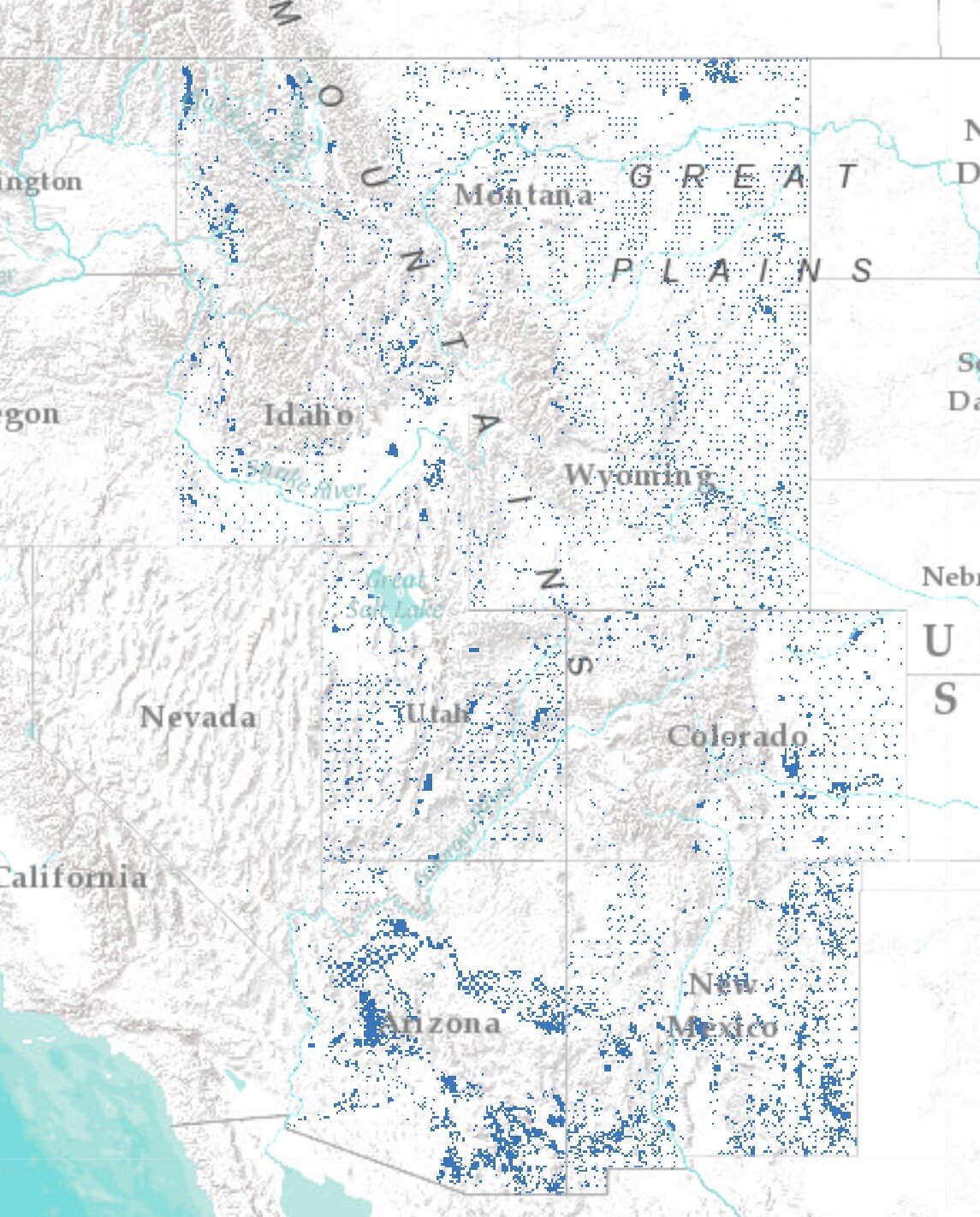State Trust Lands
Reaching the goal of protecting 30% of American lands and waters by 2030 will require action at the federal, state, and local levels. Notably, Western states own significant swaths of land, presenting opportunities for both economic development and conservation.
What are state trust lands?
Upon being granted statehood, Congress granted each Western state ownership of a portion of the lands within its borders. Now known as state trust lands, these tracts were designated to financially support public institutions, particularly schools. Based on a series of laws from the 18th century, states were given a patchwork of evenly spaced parcels of land—rather than a contiguous area—creating a now infamous “checkerboard” pattern of land ownership. Today, states, primarily across the West, hold roughly 46 million acres of land in trust, an area larger than the state of Washington.
Given their economic support mission, state trust lands are not “public lands” in the traditional sense, and public access is generally restricted. Rather, states manage their trust lands to generate revenue, leasing parcels for grazing, agriculture, logging, as well as drilling and mining. Additionally, states frequently identify trust land parcels to be sold altogether for development.
Why state trust land conservation?
State trust lands cover vast swaths of the West, including wide ranges of ecosystems and habitat. Conserving portions of state trust lands can provide connectivity with already conserved landscapes, protect critical habitat for species facing impacts from development, and strengthen local economies by providing expanded recreational access.
Western State Trust Lands
State Trust Lands of Western states are shown below. You’ll notice that there are very few in Nevada: the state exchanged its grant lands for “state selection” and “exchange” lands, the vast majority of which were sold and the proceeds deposited into the Permanent School Fund.
What are states doing?
While all agencies overseeing state trust lands are mandated to manage their lands for the financial benefit of certain institutions, many states are taking action to conserve some of their lands. Increasingly, states are looking to innovative solutions to manage their lands for conservation, whether through conservation leases, easements, recreational permits, or other programs.
In Colorado, voters established a “Stewardship Trust,” allowing up to 300,000 acres of state trust lands to be temporarily conserved. While these lands may be leased for economic activities, such as grazing, mining, and drilling, the designation ensures that natural values are conserved. Additionally, more than 30,000 acres of state trust lands are enrolled in Colorado Parks and Wildlife’s Colorado Natural Areas program, which aims to conserve key landscapes and habitat. Colorado’s State Land Board has also implemented Stewardship Action Plans to conserve key habitat for the greater sage-grouse and the Lesser Prairie Chicken.
State trust land agencies in virtually all Western states have conducted land exchanges, helping to consolidate management of broader landscapes. Utah’s Trust Lands Administration has conducted numerous land exchanges, allowing for conservation of more than 560,000 acres since 1998, including 377,000 acres within Grand Staircase-Escalante National Monument. Utah land managers have also enacted several “stewardship projects” to protect natural and cultural resources, such as the iconic Great Hunt petroglyph panel within the state’s Nine Mile Canyon. Elsewhere across the West, states including Wyoming, New Mexico and Montana have also conducted land sales and exchanges to consolidate land management and recreational access.
In 1998, Arizona voters passed a resolution dedicating funding to conserve state trust lands facing development pressure near urban areas. Under the state’s Growing Smarter State Trust Land Acquisition Program, grant funds were provided for cities to lease or purchase state trust lands to preserve open space. The program has been used to conserve a range of landscapes across the state, such as Scottsdale’s McDowell Sonoran Preserve, a popular recreation destination. While annual appropriations for the program have since ended, the Trust Land Acquisition Program can serve as a model for adoption by other states. Additionally, Arizona’s State Land Department partners with Natural Resource Conservation Districts to direct funding towards conservation projects on state lands with the goal of benefiting agriculture and grazing.
Idaho’s Department of Lands allows applications to lease state trust lands for conservation, particularly recreation and wildlife habitat. Currently, roughly 20 conservation leases are managed by the state’s Department of Fish and Game for wildlife management. Notably, conservation organizations are currently opposing a plan to sell state lands near McCall, Idaho, a recreation hotspot, instead hoping to establish a conservation or recreation easement to strengthen the region’s tourism economy.
Takeaways
Western states manage significant swaths of trust lands, primarily for the economic benefit of state schools and institutions. While these agencies are constrained by certain mandates, the opportunity exists for innovative programs to conserve state trust lands for future generations. In particular, state agencies can identify ways to establish conservation leases, permits, and programs to conserve key habitat and cultural resources, while still generating revenues. Additionally, states should continue to identify opportunities for land exchanges to consolidate land ownership and provide for the conservation of broader landscapes.



